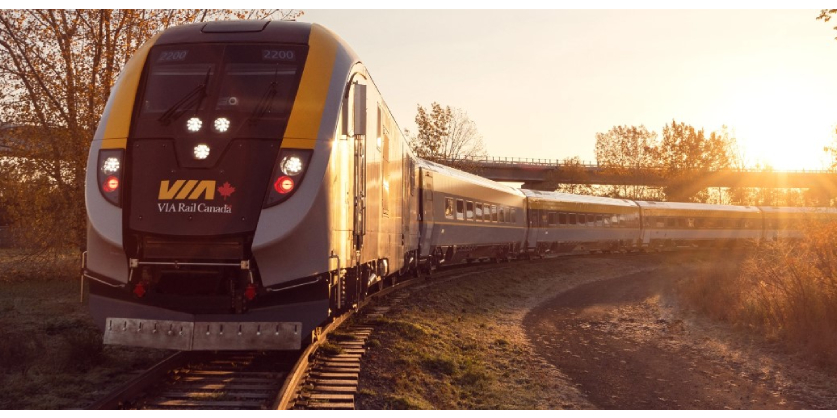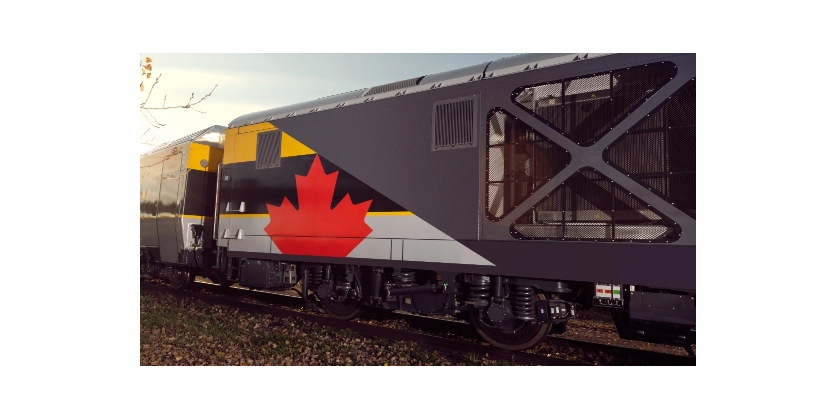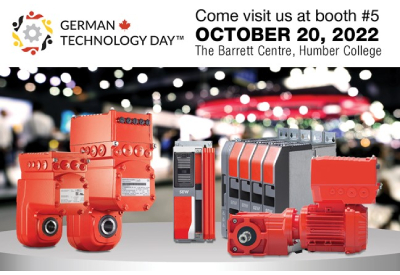VIA Rail’s New Corridor Fleet Fact Sheet. Powered by Siemens Charger Locomotives
March 8, 2023

Performance
- Powered by Siemens Charger locomotives, which are equipped with a proven propulsion system powered by a fuel-efficient Cummins QSK95, 16-cylinder diesel engine providing 4200 hp.
- The engine feeds an alternator and the IGBT traction converters provide single axle control for operation of up to 201 km/h (125 mph)* while meeting the latest EPA (Environmental Protection Agency) Tier 4 emission standards.
Safety
- Sliding-plug side doors with trap doors and retractable low-level entry steps offer improved ease of entry and exit for high- and low-level platform access.
- Passenger areas are equipped with CCTV that can be accessed by the Operations Control Center.
- Modern sealed gangways (passage between cars) are wider and have a smooth floor surface allowing for an easy transition, isolated from weather, from one car to another.
Accessibility
- Each train set has three (3) cars with onboard wheelchair lifts available in Economy class and Business class. Five (5) mobility aid spaces per trainset allow ample space for wheelchair users.
- Large and fully accessible washrooms allow for easy wheelchair maneuverability, clearer floor area, more hand grabs, a wider door opening and a power-operated door.
- Braille signage is provided on important features such as seat numbers and call-for-aid buttons. At-seat attendant call buttons at Mobility Aid Spaces. Onboard announcements available in both audio and visual formats.
Performance and Capacity
- Maximum operational speed: 201 km/h (125 mph)*
- Rated power maximum: 4200 HP à 1,800 rpm
- Operating range: 600 to 1,800 rpm
- Head end power: 600kW
- Tractive effort (max.): 65,000 lbs. (290 kN)
- Fuel tank volume: 8320 litres
- Passenger capacity (standard configuration):
- Economy: 194 seats
- Business: 87 seats
- Wheelchair lifts: 6
- Mobility aid spaces: 5
*While the new corridor fleet is able to travel at a speed of up to 201 km/h the current maximum speed allowed for passenger trains in Canada, which is determined by the Class of Track on which these trains operate, is 160km/h (100mph).
Passenger Comfort along the corridor
- Modern suspension design, featuring air spring technology delivers the highest level of comfort.
- Wider aisles, automatic touchless interior doors, large and adjustable tray tables, comfortable and ergonomic seats with integrated power outlets, USB charging and overhead reading lights. In-seat recline allows seat adjustment without encroaching into the space behind.
- A self-contained roof-mounted HVAC system with thermal and acoustic insulation maintains a pleasant environment.
- Enhanced Wi-Fi improves connectivity and supports high-speed reliable data connection.
- Latest state-of-the-art galleys optimize passenger service abilities.

Intelligent Train
- The fully integrated IT system provides the backbone for innovative applications such as vehicle diagnostics, Maintenance, Passenger information system, CCTV, and internet on board.
Optimized Maintenance
- Continuous trainset data monitoring and data analytics ensures early detection of faults, preventative maintenance and reduced downtime.
- Predictive and condition-based maintenance paired with a newly introduced computerized maintenance management information system (CMMIS) extends the useful life of components and optimizes the maintenance schedule, ultimately increasing the fleet reliability and availability.
Environmental Considerations for the corridor fleet
- These bi-directional trainsets operate more efficiently, reducing emissions and operating costs.
- The engines will meet EPA (Environmental Protection Agency) – Tier 4 emission standards which will allow for an 85%-95% reduction in particulate matter (PM) and Nitrogen Oxide (NOx) emissions and significantly contribute to improving air quality.
- The trains feature energy-saving LED lighting and dual pane windows. The locomotives use a microprocessorcontrolled electrodynamic braking system which allows the braking energy of the traction motors to feed into the train’s onboard electrical system, reducing overall fuel consumption.
- Water dispensers provide passengers with access to fresh water using their own water bottles.
Coach and Cab Car Dimensions*
- Length: 85 ft (25 908 mm)
- Width: 10 ft 6 in (3 201 mm)
- Height: 14 ft (4 268 mm)
- Floor height (above top of rail): 51 in (1 296 mm)
- Side door width: 34 in (864 mm)
- Aisle width: 27.4 in (696 mm) to 36.2 in (920 mm)
- Distance between truck centers: 59 ft 6 in (18 136 mm)
More Information
Related Story
Via Rail Reaches Crucial Milestones in Q3 2021
VIA Rail Canada (VIA Rail) reports that, between July and September, it continued to implement its gradual service resumption plan, increasing service levels to over 50% in the Québec City-Windsor corridor and reintroducing one weekly round trip on the Ocean route. As a result of these measures along with an increase in travel demand, VIA Rail recorded a rise in ridership and passenger revenues of 117% and 183% respectively during the third quarter of 2021 compared to the same period last year.



